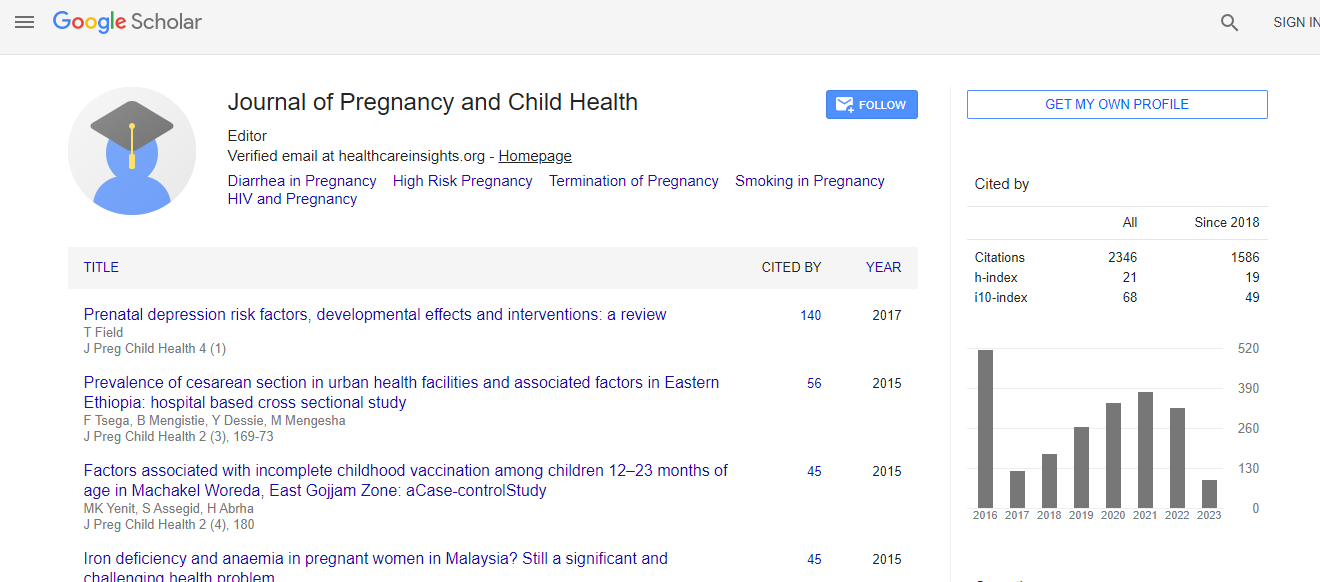Research Article
Perinatal Mortality and Umbilical Cord Parameters: Is there Any Association?
Vijaya Soliriya1, Manu Goyal1* and CP Kachhawaha21Department of Obstetrics and Gynaecology, All India Institute of Medical Sciences, Jodhpur, India
2Department of Obstetrics and Gynecology, Sampurnanand Medical College, Jodhpur, India
- *Corresponding Author:
- Manu Goyal
Assistant Professor, Department of Obstetrics and Gynaecology
All India Institute of Medical Sciences
Jodhpur, India
Tel: 91-9971833603
E-mail: drmanu_8@yahoo.co.in
Received date: July 01, 2017; Accepted date: July 20, 2017; Published date: July 27, 2017
Citation: Soliriya V, Goyal M, Kachhawaha CP (2017) Perinatal Mortality and Umbilical Cord Parameters: Is there Any Association? J Preg Child Health 4:340. doi:10.4172/2376-127X.1000340
Copyright: © 2017 Soliriya V, et al. This is an open-access article distributed under the terms of the Creative Commons Attribution License, which permits unrestricted use, distribution, and reproduction in any medium, provided the original author and source are credited
Abstract
Introduction: Abnormal cord parameters associate with high rate of asphyxia during delivery, foetal anomalies, non-reassuring foetal status, respiratory distress, foetal growth restriction and delivery interventions. Objective: To study the correlation between umbilical cord parameters and perinatal mortality. Materials and methods: This was a prospective study carried out in the Umaid Hospital, Dr. S N Medical College, Jodhpur from March-2014 to November-2014. It included 500 cases admitted to labour room with period of gestation >37 weeks. Details of delivery of baby including mode of delivery, Apgar score, NICU admission and any congenital anomaly found in unbooked cases post-natally was noted down. Umbilical cord parameters were also noted and correlated with perinatal outcome using Fischer’s exact test and Chi square test. Results: Out of 500 cases, the cord length was normal in 88.2% cases while it was short in 6.2% and long in 5.6% cases. True knots were associated with a higher mean cord length of 95.83 ± 24.99 cm. The difference of mean cord length between single loop and more than two loops was highly significant (p value<0.001). Cesarean section rate was found to be significantly different between one loop and more than two loops (p<0.001). Conclusion: The excessively long cords are associated with cord prolapse, true knot and poor fetal outcome and increased operative interference. Short cords are associated with failed progress, cord rupture and congenital malformations. Nuchal cords are responsible for threatening fetal well being along with other placental as well as intrapartum factors for poor fetal outcome.

 Spanish
Spanish  Chinese
Chinese  Russian
Russian  German
German  French
French  Japanese
Japanese  Portuguese
Portuguese  Hindi
Hindi 
